Welcome to DU!
The truly grassroots left-of-center political community where regular people, not algorithms, drive the discussions and set the standards.
Join the community:
Create a free account
Support DU (and get rid of ads!):
Become a Star Member
Latest Breaking News
General Discussion
The DU Lounge
All Forums
Issue Forums
Culture Forums
Alliance Forums
Region Forums
Support Forums
Help & Search
The DU Lounge
Related: Culture Forums, Support ForumsNormcore: Just Your Average, Everyday Paradox
The impossible tension of an anti-fashion portmanteauhttps://www.theatlantic.com/newsletters/archive/2022/01/normcore-average-everyday-paradox/621110/

Like a suspenseful story or a taut tightrope, a good word can carry a sense of internal tension. This is most evident in a portmanteau, where multiple words are smashed together to form a new word that combines their meanings (it’s named after the portmanteau suitcase, which opens into two separate compartments). Bromance, labradoodle, Chamillionaire: A collision of two words yields a natural sense of drama. What’s going to come of the romance between these bros? What happens when you breed a Labrador and a poodle? How does a chameleon become a millionaire? Portmanteau words are like linguistic sitcoms—the more unlikely the pairing, the funnier they become. Which is why I always loved the word normcore.
For those of you who haven’t been keeping abreast of popular fashion trends for the past 10 or so years, normcore was a short-lived but widely discussed movement in the mid-2010s. Its aesthetic ideal, as the name suggests, was maximal blandness. Jeans, a monochromatic T-shirt, sneakers: The distinctive aspect of normcore style was a commitment to indistinction. The coolness of anti-cool. First coined by the trend-forecasting collective K-Hole in 2013, the term has since been wrung dry by the social media–media industrial complex through countless think pieces, analyses, and, eventually, a formal introduction into the lexicon.
But my morbid interest in normcore half a decade later comes from the beautiful drama of the portmanteau. This particular suitcase of a word opens up into norm and core, two very different compartments. Norm, meaning something standard, basic, or socially acceptable, comes to us from the Latin norma, a unit of measurement used in ancient Roman carpentry. Core, meanwhile, when used after hard, denotes the gritty center of something, and came to modern parlance in the middle of the 20th century through explicit pornography. The fragment -core eventually became detached from hard- to denote the fiercest advocates of an artistic movement, such as grindcore music, mumblecore movies, or clowncore … clowns. The composite normcore creates a paradoxical juxtaposition, and a compelling narrative question: How can something be normal in the extreme?
The answer, I believe, has to do with contrast. In the early 2010s, pre-normcore, there was an intense emphasis on individualism in personal style. Social-media marketing encouraged us to use our profiles to stand out by leaning into our “authentic” personal brands (if only to create more markets to cater to). But this obsession with aesthetic uniqueness soon became boring—we longed to look the same. A new era of fashion focused on homogeny: Kanye West’s monochromatic Yeezy shows, the reproducible plainness of streetwear, and, of course, normcore, which exhibited a lack of personal style that, in contrast with the individualistic look-at-me style that preceded it, seemed pretty hard-core. Hence the Thursday clue: “Style characterized by extreme blandness.”
snip
my adds:
2013-2016 examples, plus the 2003 progenitor
Cayce Pollard is the fictional protagonist of William Gibson's 2003 novel Pattern Recognition. She is the archetypal ur normcore persona.
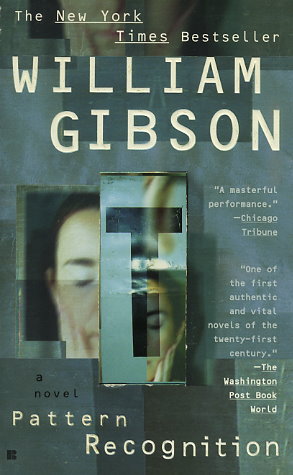
CPUs for the meeting, reflected in the window of a Soho specialist in mod paraphernalia, are a fresh Fruit T-shirt, her black Buzz Rickson's MA-1, anonymous black skirt from a Tulsa thrift, the black leggings she'd worn for Pilates, black Harajuku schoolgirl shoes. Her purse-analog is an envelope of black East German laminate, purchased on eBay if not actual Stasi-issue then well in the ballpark. She sees her own gray eyes, pale in the glass, and beyond them Ben Sherman shirts and fishtail parkas, cufflinks in the form of the RAF roundel that marked the wings of Spitfires.
CPUs. Cayce Pollard Units. That's what Damien calls the clothing she wears. CPUs are either black, white, or gray, and ideally seem to have come into this world without human intervention.
What people take for relentless minimalism is a side effect of too much exposure to the reactor-cores of fashion. This has resulted in a remorseless paring-down of what she can and will wear. She is, literally, allergic to fashion. She can only tolerate things that could have been worn, to a general lack of comment, during any year between 1945 and 2000. She’s a design-free zone, a one-woman school of anti whose very austerity periodically threatens to spawn its own cult.
—?Pattern Recognition, 2. "Bitch", page 8.
As a consequence of her sensitivity, Cayce dresses in plain clothing she has either bought or rendered unadorned with brand markings of any kind (one possible exception is her "Luggage Label" hip bag, bought from Parco in Tokyo). These are referred to as "Cayce Pollard Units" or C.P.U.s, a term initially used by her friend Damien, and subsequently by Cayce, although never aloud. They are typically Fruit of the Loom shrunken cotton T-shirts worn with black oversized Levi's 501s, skirts, tights, boots, and a Buzz Rickson MA-1 bomber jacket.
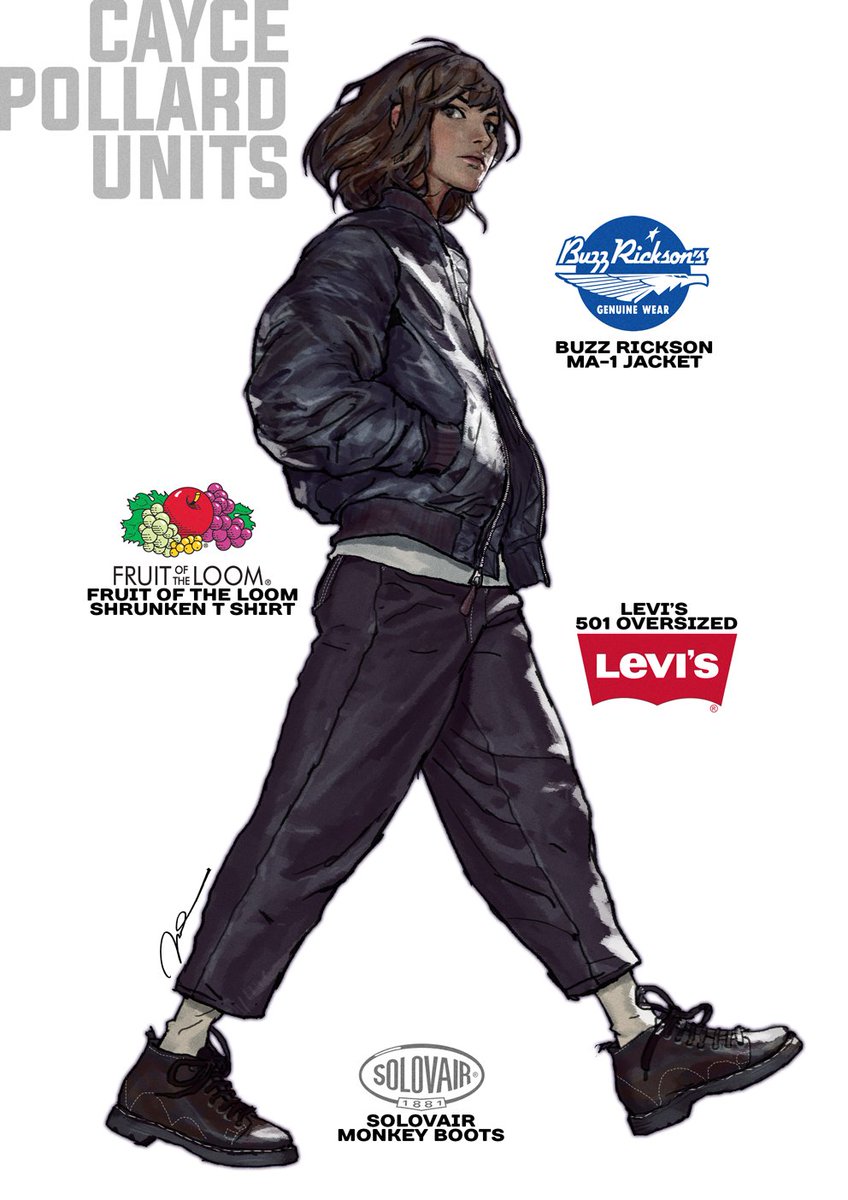
BUZZ RICKSON X WILLIAM GIBSON MA-1
https://www.historypreservation.com/products-page/brands/buzz-ricksons-william-gibson-collection-black-ma-1-intermediate-flying-jacket-modified-tailored-cut/

https://www.selfedge.com/index.php?route=product/product&product_id=647
The U. S. Air Force MA-1 Intermediate Flying Jacket was introduced as a descendant of the "modified" B-15D Flying Jacket in 1957. These early MA-1 jackets were made of a grayish shade of sage green heavy nylon twill fabric, warmly lined with woolen fiber filling sandwiched between the outer nylon shell and the sage green inner nylon lining. Later MA-1"s produced in the 1960"s declined in quality and warmth and featured a reversible orange lining. Buzz Rickson has offered an absolutely magnificent copy of the first-pattern MA-1 Flying Jacket ever since they began making historical clothing in 1994.
Early in 2003, best-selling novelist William Gibson released a groundbreaking new book by the name of "Pattern Recognition". This novel is set in the period immediately following "9-11", featuring a high-tech, super-hip, cyber-chic, anti-fashion marketing agent, Cayce Pollard, as the heroine. Woven within the many pages of cutting-edge writing Mr. Gibson has crafted is the one object more valued by Cayce Pollard than any other she owns" the Black Buzz Rickson MA-1 Flying Jacket.
William Gibson is an author of great talent and exceptionally good taste. Vintage clothing represents an area of personal interest to him, this especially includes wrist watches, MA-1 jackets, and the 1950 fishtail parka of the U. S. Army. He is a great admirer of the goods produced by Buzz Rickson, which is what provided the inspiration for the fictionalized Buzz Rickson Black MA-1 Jacket worn by this central character. Mysteriously, in the course of writing his novel, Mr. Gibson forgot that no MA-1"s were ever produced for the USAF in black.
The marketing team at Buzz Rickson in Japan was looking for a very unique and special item to acknowledge their tenth anniversary in 2004. Sometime in 2002, just as William Gibson was simultaneously giving life to the Buzz Rickson Black MA-1, Buzz Rickson was giving life to their tenth anniversary jacket - a special limited edition MA-1 fabricated in jet black.
Built with the same attention to detail that made Buzz Rickson a brand some Japanese customers wait well over a year to obtain and assembled out of authentic vintage-spec., we are happy to offer all those dedicated and uniquely anti-fashion fans of Pattern Recognition the Buzz Rickson Black MA-1. Buzz Rickson has agreed to use their 1957 Lion Uniform Company MA-1 as the basis for this garment, made with original spec. heavy nylon twill (but now in black), heavy-duty Crown?? zippers and devoid of any USAF markings other than the Buzz Rickson"s MA-1 spec. label in the lining, just as Cayce Pollard would have had it. Other than the color, this MA-1 is identical to the first-pattern MA-1 issued to the USAF, and exactly what William Gibson had in mind for Cayce. This MA-1 is a limited edition with finite stocks available.
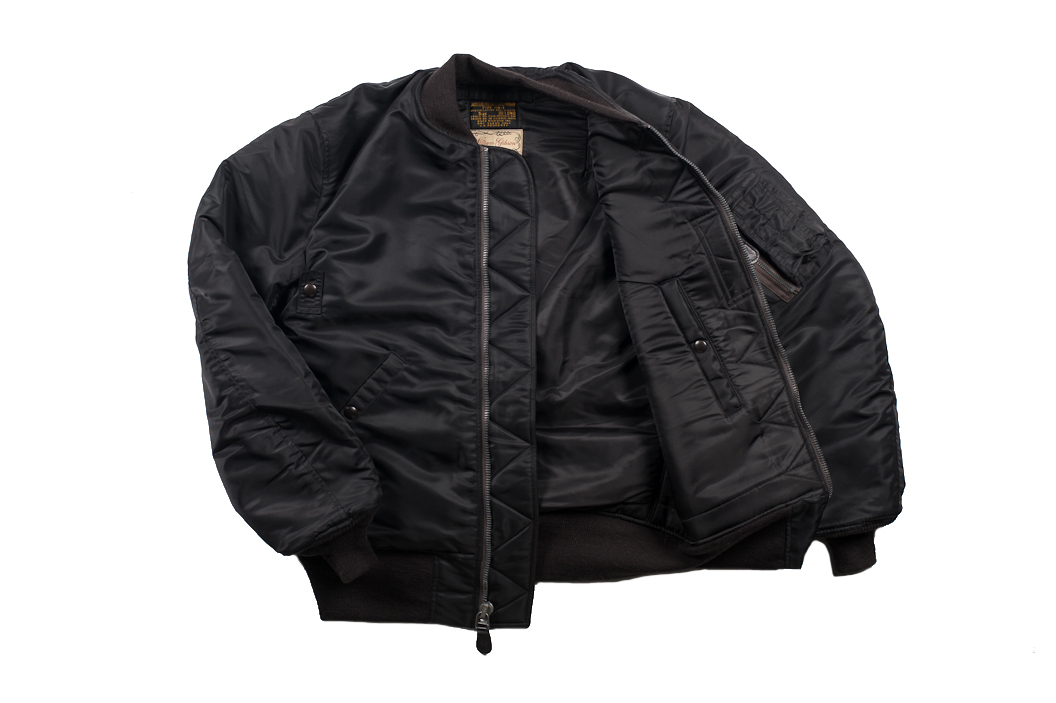
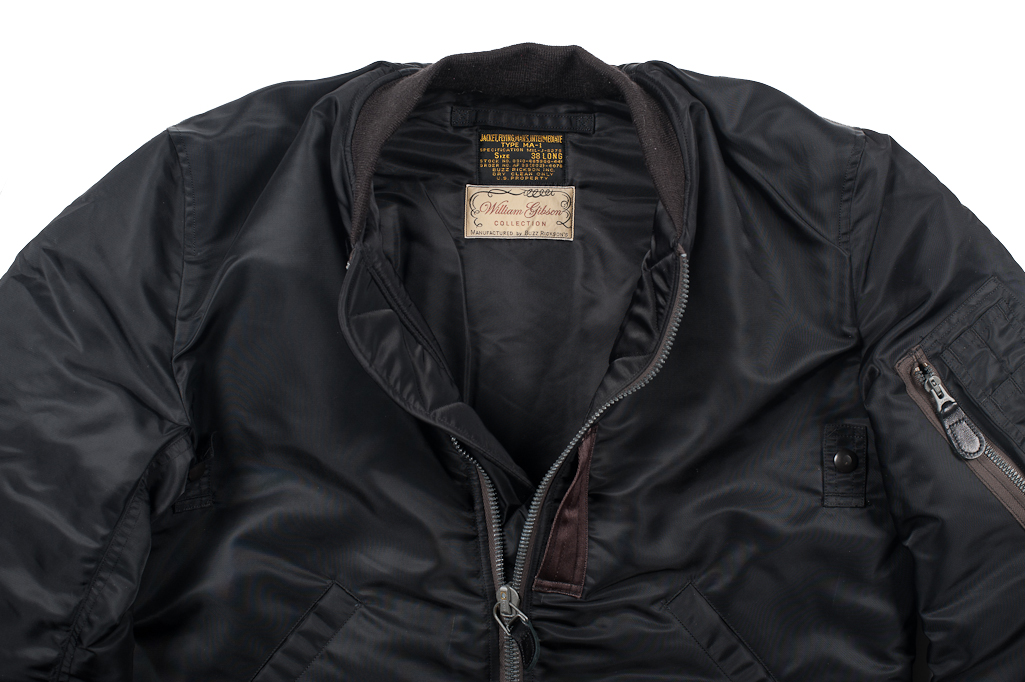








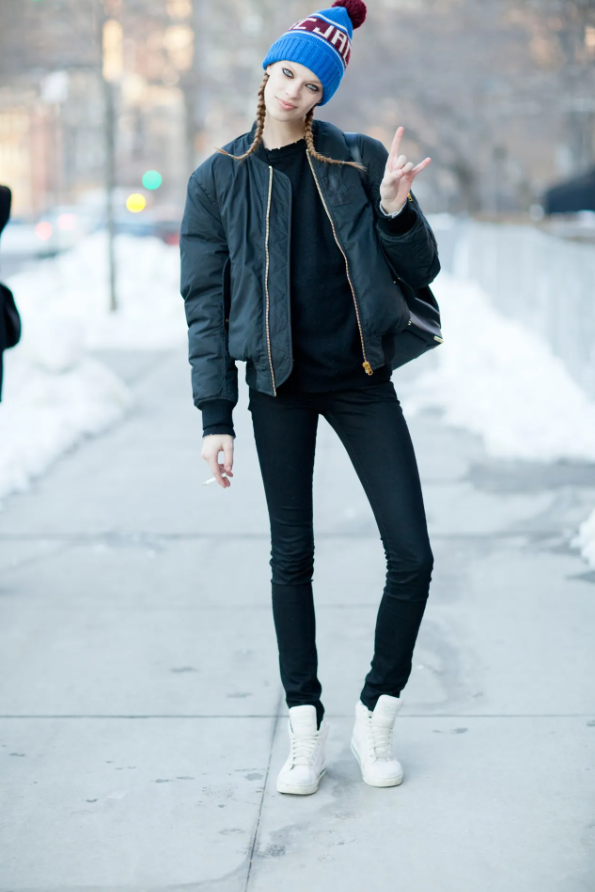

InfoView thread info, including edit history
TrashPut this thread in your Trash Can (My DU » Trash Can)
BookmarkAdd this thread to your Bookmarks (My DU » Bookmarks)
1 replies, 319 views
ShareGet links to this post and/or share on social media
AlertAlert this post for a rule violation
PowersThere are no powers you can use on this post
EditCannot edit other people's posts
ReplyReply to this post
EditCannot edit other people's posts
Rec (2)
ReplyReply to this post
1 replies
 = new reply since forum marked as read
Highlight:
NoneDon't highlight anything
5 newestHighlight 5 most recent replies
= new reply since forum marked as read
Highlight:
NoneDon't highlight anything
5 newestHighlight 5 most recent replies
Normcore: Just Your Average, Everyday Paradox (Original Post)
Celerity
Jan 2022
OP
Jeans, boots (outside), thermal longsleeve T, a sweater or pull over - no branding -
OAITW r.2.0
Jan 2022
#1
OAITW r.2.0
(24,455 posts)1. Jeans, boots (outside), thermal longsleeve T, a sweater or pull over - no branding -
my normal dress inside. Works for me.